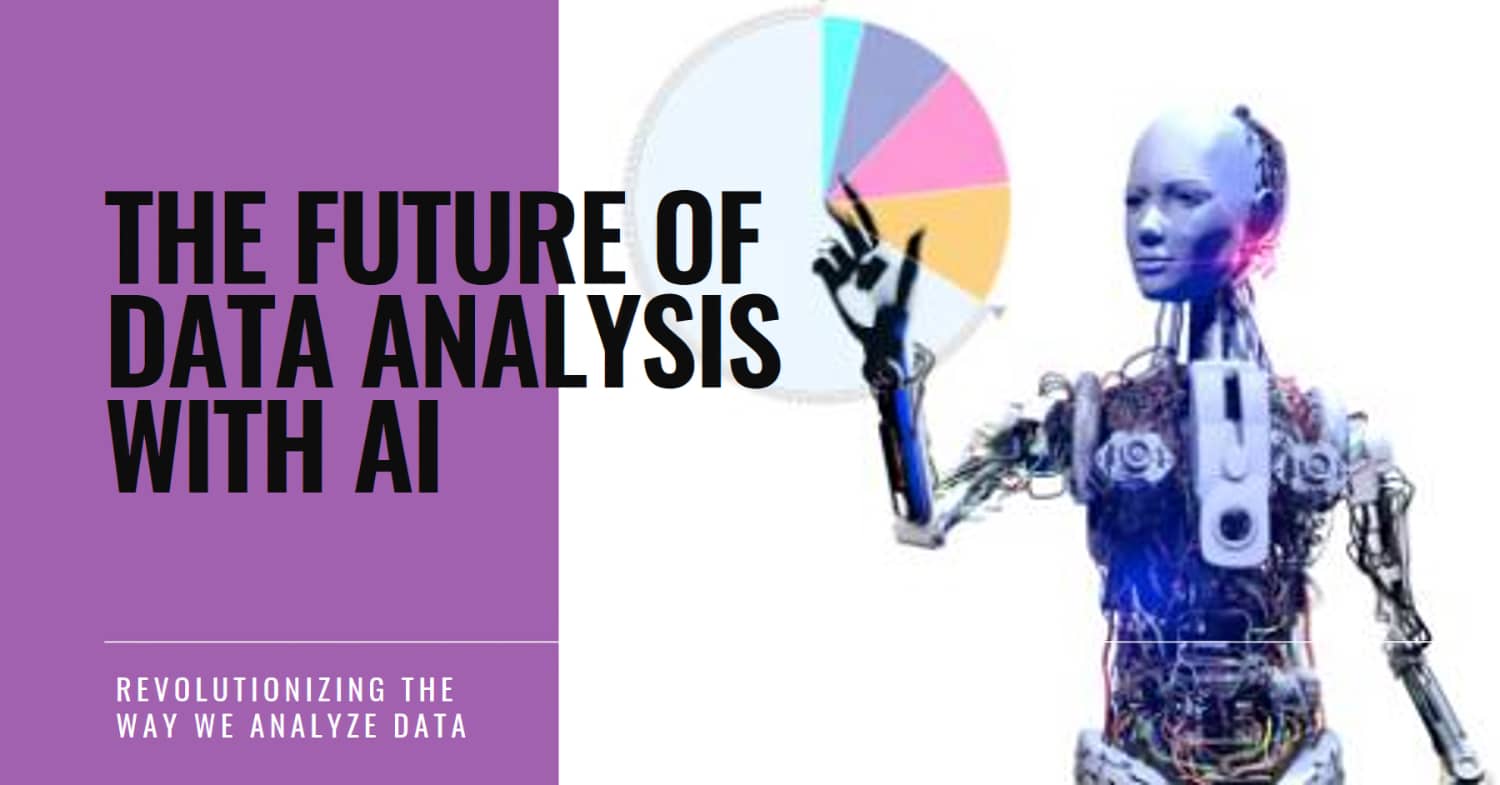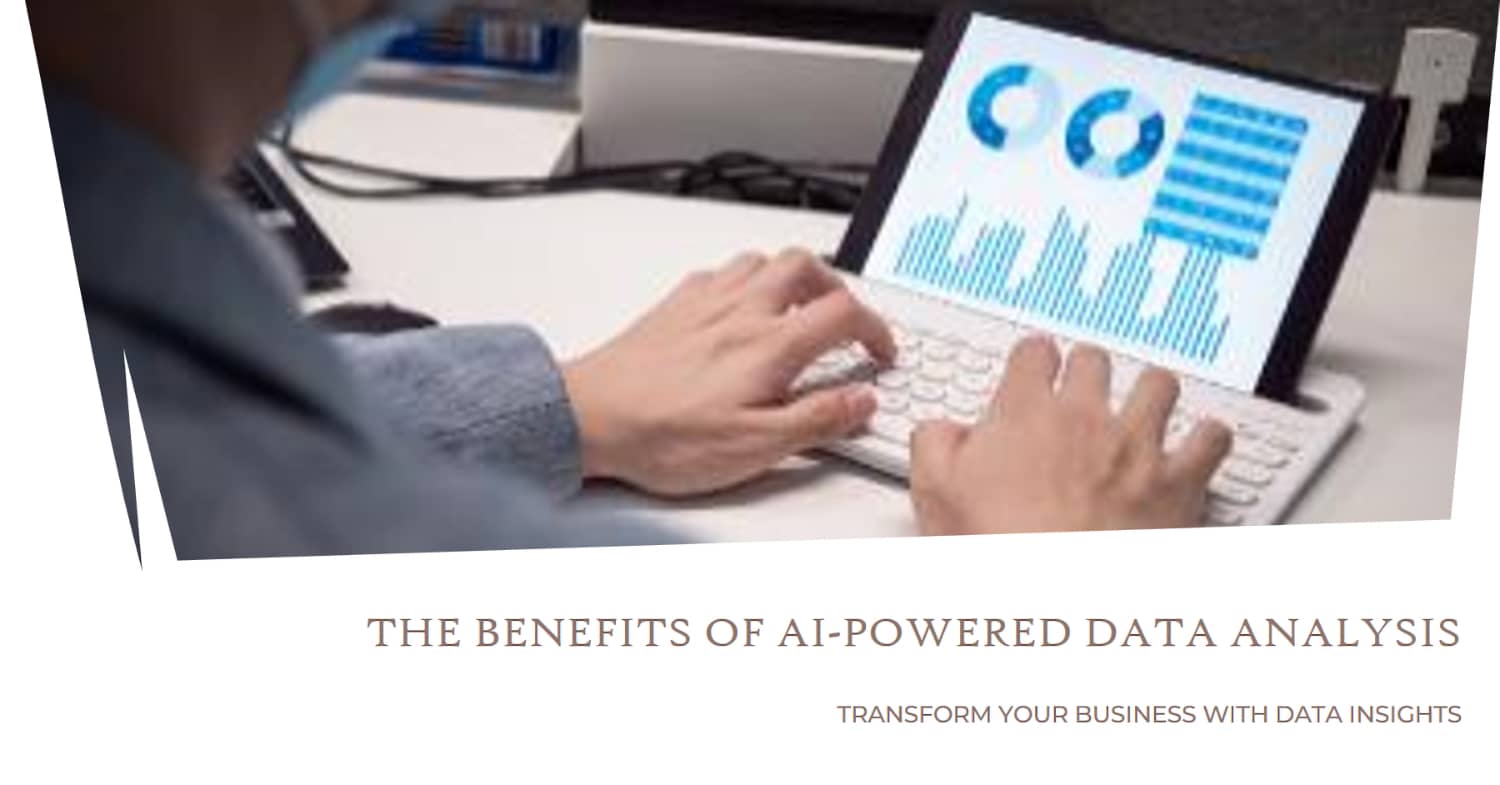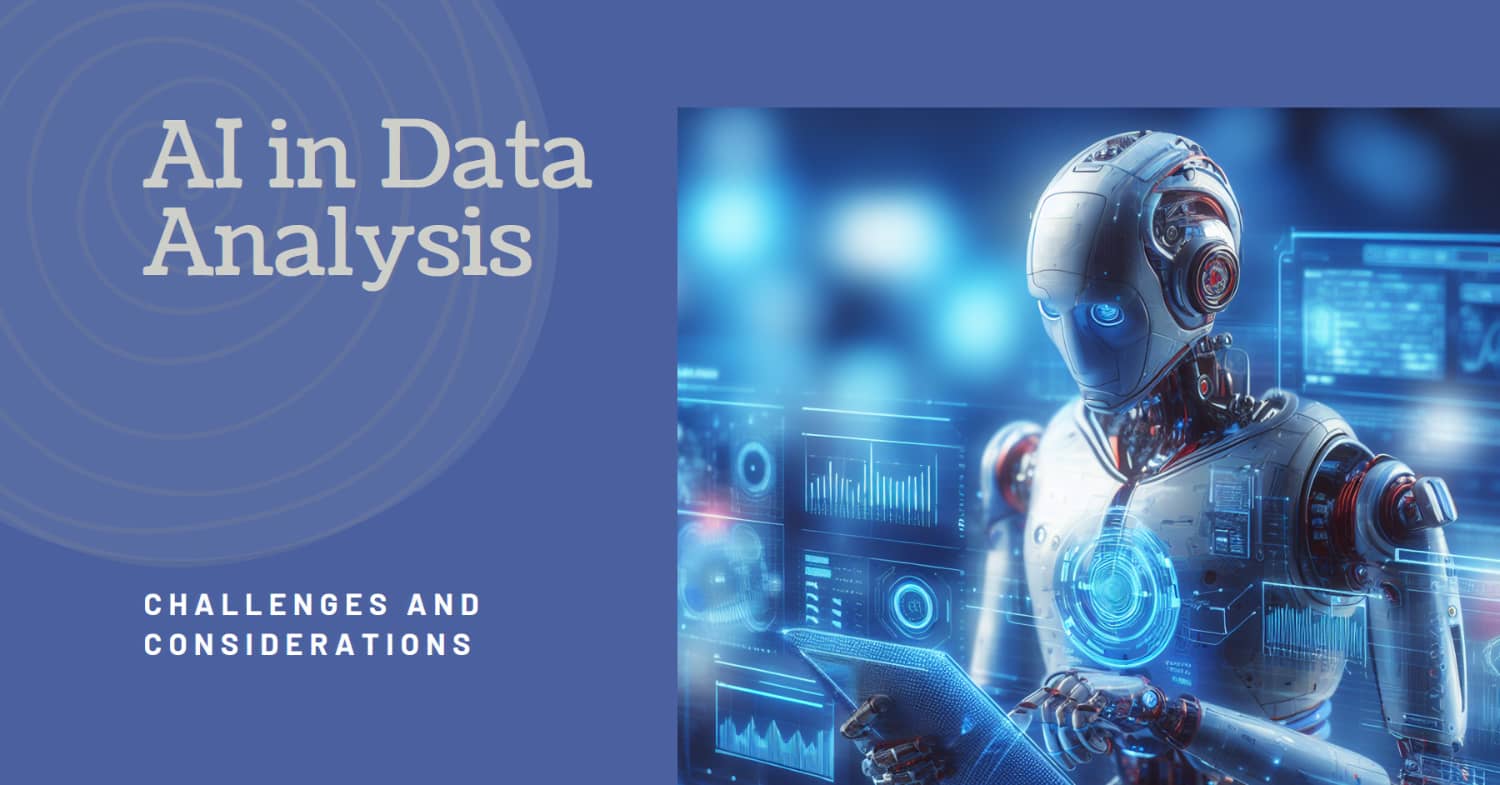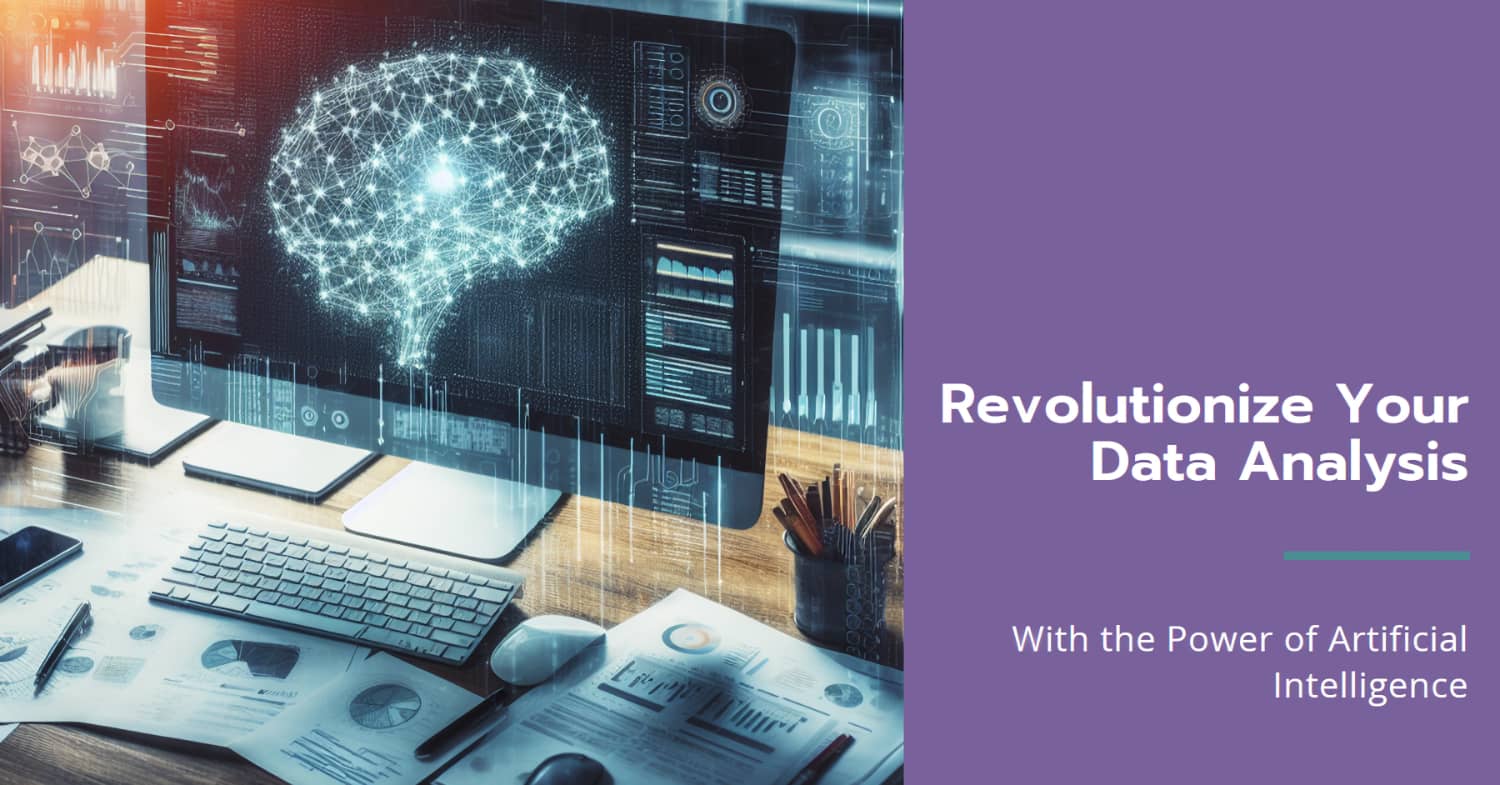The advent of artificial intelligence (AI) has transformed numerous industries, but its impact is especially pronounced in the realm of data analysis. As data volumes explode and datasets become increasingly complex, traditional manual analysis methods struggle to keep pace. This is where the disruptive power of AI comes into play.
Recent surveys show that over 50% of organizations are actively using or planning to deploy AI techniques for data analysis within the next year. Why this enthusiasm for AI analytics? Quite simply, AI empowers data analysts to work smarter - not harder. By automating tedious, repetitive tasks, AI algorithms enhance productivity. Meanwhile, machine learning uncovers subtle patterns in vast datasets that humans could never discern on their own.
The result? Businesses can now base decisions on hard data insights rather than intuition. They can predict emerging trends, personalize customer interactions, optimize operations - all thanks to AI-driven analytics. It's no wonder AI adoption is accelerating across industries spanning marketing, healthcare, finance, transportation, and beyond.
However, while the benefits of AI data analysis are multidimensional, implementation does not come without challenges. Achieving ROI requires careful planning, cross-functional collaboration, and - above all - high-quality datasets. In this blog, we explore leading techniques in AI-enhanced analytics, real-world applications, common pitfalls to avoid, and more - read on for actionable insights!

The Rise of AI in Data Analysis
The meteoric rise of artificial intelligence across industries in recent years can be attributed in large part to explosive data growth. As digital transformation accelerates, companies now generate and store hundreds of terabytes of data daily from web traffic, mobile apps, IoT sensors, and numerous other sources.
This massive influx of big data presents both a challenge as well as an opportunity. While traditional manual techniques rapidly break down in the face of huge, fast-changing datasets, the distributed parallel processing power of AI algorithms provides a path to extract actionable insights swiftly and accurately. As computing costs have fallen sharply, AI adoption has soared.
In particular, data-rich verticals like finance, ecommerce, marketing and healthcare have aggressively embraced AI-powered analytics. Innovative techniques like machine learning, deep learning, and natural language processing (NLP) now allow analysts to classify, predict, optimize and more based on mountains of real-time data without being overwhelmed.
Some key drivers propelling the expansion of AI in business intelligence and data analysis include:
Expanding data complexity and variety (structured, unstructured, etc) - AI can integrate disparate data types from CRM records to IoT sensor streams to social media sentiment for a 3600 view
Demand for predictive insights - Historical reporting provides rear-view mirror visibility; AI delivers accurate forecasts to drive strategy
Faster time-to-insights - Where it could take a human analyst weeks to process a dataset manually, AI automation reduces this to hours or minutes
Personalization at scale - With individual-level insights on millions of customers, AI powers hyper-tailored recommendations and experiences
As per leading research firms, we are merely scratching the surface when it comes to enterprise AI adoption. Continued improvements in computing power, smarter algorithms, streamlined tools, and changing mindsets together hint at even more dramatic transformation in the data analysis landscape over the next decade.

The Benefits of AI-Powered Data Analysis
Implementing AI techniques for data analysis unlocks a multitude of benefits for organizations across functions. By automating time-consuming, repetitive manual tasks, AI liberates human analysts to focus on higher-value interpretive work. Augmented by machine intelligence, data teams can deliver more insightful, timely analysis to the business - driving competitive advantage.
Let's delve deeper into some of the top perks of embracing AI analytics:
Enhanced Productivity and Efficiency
Perhaps the most direct advantage is freeing up the time of data professionals by using AI to handle tedious, low-level work. This includes:
Data cleaning/preparation - fixing missing values, detecting outliers, merging datasets
Feature engineering - transforming raw data into formats digestible for advanced analytics
Model building/tuning - testing multiple algorithms, tweaking hyperparameters for better performance
Since these tasks comprise up to 80% of typical analysis workflows, AI acceleration here is invaluable. Analysts gain more cycles to iteratively refine analytics and extract meaning from the models.
Higher Quality Insights
Another major benefit of AI analytics is identifying overlooked insights humans would likely miss given data complexity and scale. By objectively analyzing vastly more data signals and combinations thereof, algorithms discern subtle correlations and patterns.
Machine learning delivers a huge boost in analytical power - a 2020 MIT study found algorithms surpass human performance in extracting insights from complex datasets with lots of features. Such nuanced understanding drives better decisions.
Predictions and Recommendations
Historical snapshots have limited utility. Where AI truly Differentiates is through predictive modeling - forecasting future trends and occurrences by assessing multitudes of input variables. AI analytics leverages leading-edge techniques like:
Regression analysis - Predict continuous numerical outcomes like sales, stock prices
Classification models - Categorize customers, transactions etc. into pre-defined classes
Recommendation systems - Suggest contextually relevant products based on collective intelligence
Such accurate, individualized predictions enable preemptive actions, from supply chain optimization to personalized promotions and beyond.
Operational Cost Savings
Given the above advantages, AI analytics translates into significant operational cost reduction and ROI across the enterprise. Key areas of saving include:
Data team productivity - Doing more high-value work faster with less manual effort
Inventory and cash flow - Tighter forecasts cut waste, stockouts and working capital needs
Customer acquisition costs - Optimized targeting and messaging compresses sales cycles
According to leading research, over 80% of firms implementing AI analytics recorded cost reductions, with 30% achieving savings of over 20% in business operations.
In summary, infusing artificial intelligence throughout data workflows boosts productivity, insight quality, prediction accuracy and ultimately ROI - giving organizations an enduring competitive edge.

AI Techniques for Data Analysis
There exist a variety of AI techniques leveraged today to unlock value from data across industries and use cases. Let's explore some popular methods:
Machine Learning
Machine learning (ML) algorithms enable computers to learn behaviors, patterns and relationships within data without being explicitly programmed. Based on statistical modeling, these adaptive methods continue optimizing their analytics as they process more data. ML is extremely effective at finding correlations among hundreds of variables.
Common machine learning approaches include:
Supervised learning - Models trained on labeled historical data make predictions on new unlabeled data. Classification for tagging and regression for forecasting.
Unsupervised learning - Algorithms find intrinsic structures within datasets without any historical training data or outcomes. Clustering documents into topics based on contents for example.
Key benefits of ML for business analytics include surfaced insights that inform better decisions, individual-level targeting, and accurate predictions.
Natural Language Processing
A swiftly growing application of AI is to extract insights from unstructured text data - from customer surveys to social media to enterprise documents. Natural language processing (NLP) techniques enable contextual semantic analysis for a variety of applications:
Sentiment analysis - Automatically classifying subjective opinions in text - positive, negative, neutral
Topic modeling - Discovering key themes discussed across thousands of documents
Named entity recognition - Identifying people, organizations, geographies within unstructured text
Understanding text data unlocks an entirely new depth of customer and employee intelligence to guide strategy.
Computer Vision
Another expanding domain for applied AI analytics is computer vision (CV) - making sense of visual content by processing images, video frames to identify objects, scenes, activities and imagery. This is extremely relevant for:
Visual inspection - Automated quality analysis on manufacturing lines
Retail analytics - Determining customer demographics from security footage
Medical imaging diagnostics - Detecting cancerous cells, measuring tissue lesions
The world contains exponentially increasing volumes of untapped visual data - AI computer vision finally unlocks this for enhanced decision making.
The universe of AI techniques also encompasses deep learning neural networks, reinforcement learning, robotics and more for those seeking advanced analytics. The key is aligning the right methodology to each unique business problem for optimal outcomes.
Real-World Applications of AI in Data Analysis
While the concepts underpinning AI analytics may seem complex, the real-world results unlocking enhanced efficiency, insights and decision making are anything but academic. Let's showcase some practical applications across key industries:
Ecommerce - Optimizing Marketing ROI
A top priority for digital retailers is maximizing return on their huge marketing investments amidst intense competition. AI comes to the rescue here by:
Analyzing years of promotional campaign data, external signals, customer traits and responses
Developing propensity models predicting most likely positive response for each individual
Enable dynamically optimized bid prices and messaging tailored to micro-segments
Continually assess campaigns and fine-tune targeting for better conversions
The end result? Double-digit growth in sales and ROI through surgically targeted, insight-driven campaigns.
Banking - Combatting Payment Fraud
For financial institutions, detecting and minimizing payment fraud is mission-critical. AI algorithms can analyze millions of transaction attributes in real-time and:
Spot anomalies undetectable to humans based on pattern analysis
Rapidly develop custom models tuned to new fraud tactics
Maintain extremely high accuracy despite evolving criminal techniques
Provide explainability into fraud scores for auditors
Operationalizing deep learning neural networks has led to 50%+ reductions in false positives and fraud rates for banks.
Healthcare - Enhancing Diagnostics
AI is advancing global health outcomes in a multitude of ways. A major area is augmenting clinical diagnostic capabilities through:
Processing patient symptoms, medical history, lab tests
Comparing against statistics from millions of anonymized records
Identifying possible conditions ranked by probability
Accelerating time-to-treatment through early detection
Embedding AI decision support helps clinicians minimize risk, reduce costs and save lives.
The applications of AI-powered data analytics span virtually every industry primed for disruption - from insurance to manufacturing to transportation and smart cities. Unleashing machine intelligence on once static enterprise data accelerates innovation.

Challenges and Considerations for Implementing AI in Data Analysis
While augmented analytics delivers tangible business value, realizing the full potential necessitates navigating common pain points upfront through governance and planning:
Curating Clean, Unbiased Datasets
The axiom "garbage in, garbage out" very much applies to AI - if the underlying training data itself is incomplete, noisy, or skewed, the resulting insights will be fundamentally flawed. Data governance covering:
Appending related datasets into a unified view
Fixing missing fields and filtering outliers
Addressing any sampling bias by domain experts
is mandatory before unleashing machine learning to prevent perpetuating errors or incorrectly extrapolating trends.
Selecting the Optimal Analytics Technique
AI encompasses a diverse set of methodologies - regression, neural networks, NLP, reinforcement learning and more. The first question should be:
"What business problem needs solving?"
not "What AI/ML model should we try?"
Aligning objectives to data at hand to the appropriate technique is crucial for success. Having in-house data science experts or AI consultants prevents overengineering.
Interpretability and Explainability
A key consideration for many organizations is gaining visibility into the inner workings of AI models responsible for making millions of high-value predictions. Techniques like Explainable AI (XAI) that provide transparency into significant variables driving forecasts and recommendations build confidence and trust.
Understanding the "why" behind AI decisions will continue gaining importance given ethical considerations as well.
In closing, while AI injects undisputed performance advantages, integration with data analysis workflows necessitates upfront planning and care. Incorporating the above data management, model governance and transparency best practices paves the smooth adoption path towards amplified, trusted insights.
The Future of AI in Data Analysis
The AI wave transforming data analytics today hints at an even more seismic impact in the decade ahead. Continued computing advances expanding accessible data volume and variety will fuel deeper insights and automation.
Key trajectories for AI analytics include:
Mainstreaming of End-to-End ML Pipelines
Fragmented workflows combining manual coding and disjointed tools will give way to unified cloud-based platforms like Google Vertex AI, Azure ML, Amazon SageMaker etc. With intuitive visual interfaces, these dramatically lower barriers for building and deploying ML models by data scientists and citizen analysts alike. Automated MLOps will acceleratezl feedback loops and continuous enhancement.
Convergence of AI, BI and Big Data
Business intelligence (BI) solutions will natively incorporate more AI-driven data preparation, analysis and visualization capabilities. Meanwhile, leading big data platforms like Snowflake, Databricks, etc. will offer augmented analytics functionality for deriving enterprise insights beyond just storing and processing data. The lines across AI, BI and big data realms will blur for more holistic augmented intelligence.
Generative AI for Synthetic Data
Techniques like Generative Adversarial Networks (GANs) can artificially generate realistic synthetic datasets for model training. This mitigates issues of accessing sensitive real-world datasets at scale. Even exponentially growing data variety and volume limitations can be addressed through AI itself!
The overarching trend is AI will become the engine powering data-driven enterprise innovation, permeating every analytics workflow. Rather than displacing humans, it will collaboratively amplify their productivity. Leveraging the synergistic strengths of minds + machines will light the path to continuous intelligence and improved decision making as firms navigate growing complexity and change.


